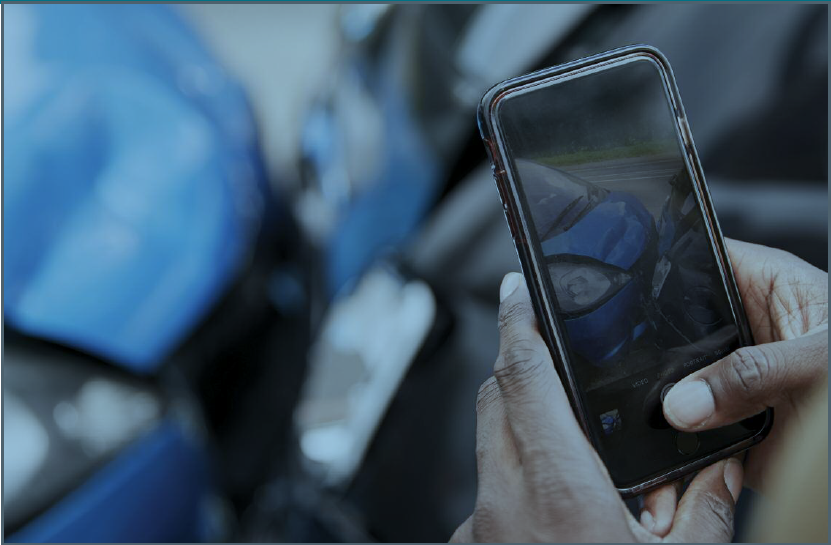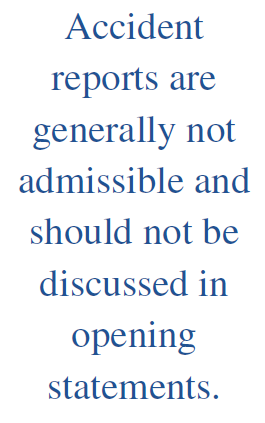Circuit Civil Trial and Evidence Practice Pointers
| Publication year | 2021 |
| Pages | 0031 |
By Judge Elisabeth A. French, Julia T. Cochrun, and LaBella S. McCallum

With changes in the law school curriculums in terms of evidence requirements, many in the legal profession have observed that attorney trial skills have declined in recent years. The goal of this article is to present practical trial tips and important concepts to understand when offering evidence at trial.
Insurance
The scope of voir dire examination is left largely to the discretion of the trial judge.1 "It is well settled that a trial court is vested with great discretion determining how voir dire examination will be conducted. . . the trial court's decision will not be overturned except for an abuse of that discretion."2 During voir dire examination, the judge will usually address the jury to determine whether a juror is covered under an insurance policy providing coverage to a defendant in the case. Challenges for cause are allowed when a juror, in the case of a mutual company, is the holder of a policy of insurance with an insurance company indemnifying any part of the case.3 Only in exceedingly rare circumstances will the existence of insurance be admissible.
Opening Statements
The purpose of opening statements is to explain the case and what the parties expect the evidence will show. Some attorneys provide details about witnesses and what they expect the testimony will be. Many jury trials in this state involve automobile accidents. Accident reports are generally not admissible and should not be discussed in opening statements. Attempts to admit accident reports as evidence may result in a mistrial.4 Accident reports can be admissible evidence when the officer who is authoring the reports personally observes all the events described in the report.5

Pretrial and Motions In Limine
Trial preparation necessitates knowing the admissi-bility foundations for the required elements of proof.6 Identifying the forms of proof available and eliminating admissibility obstacles is key. Anticipating the form of the objection and the response thereto will allow coherent trial flow.7 Standard pretrial orders and an individual judge's pretrial orders compel parties to preemptively address evidentiary issues. Stipulations can streamline issues. Motions in limine allow the court to address evidentiary issues so that the parties can plan accordingly.8 Rulings, pretrial and otherwise, must be made part of the record. Despite a ruling pretrial that offered evidence is not precluded, a proper foundation must still be laid at trial. If the evidence is ruled precluded, make an offer of proof on the record. Protect the record, clearly stating grounds for or against admissibility.9 Follow through on pretrial and in-trial rulings by instructing witnesses as to how they may impact their testimony to avoid a mistrial or other sanctions.10
Demonstrative Evidence
Demonstrative evidence is a vital tool of persuasion in a trial. There is a clear difference between non-admissible demonstrative exhibits that may be used to highlight or explain other evidence and admissible demonstrative evidence that may go back to the jury for deliberations. Authentication using evidence sufficient to support that the exhibit is what you claim is required.11 It must be rele-vant,12 be more probative than prejudicial,13 overcome hearsay is-sues,14 be based on personal knowledge,15 and if it contains opinions, must comply with ARE Rules 701 and 702.
Educational summaries are generally not admissible. Example: Counsel's writings on a flipchart of key points of a witness's testimony. The court may permit a party to use such materials in presenting its unilateral view of the evidence to assist the jury.16 As a form of argument, the court (and opposing counsel) should make clear that the summary exhibit is not actual evidence. It is excluded from the jury room during deliberations.
Substitute evidence is admitted in place of actual evidence. A creation of a party, it should be vetted by both the opposing counsel and the court to prevent introduction of otherwise inadmissible material. Example: A compilation summary listing of medical bills incurred by the injured party. Ala. R. Evid. Rule 100617 establishes the method for admissibility of such substitute evidence when the underlying evidence would be impracticable to present at trial due to sheer volume. This condensed version allows for focus on what the voluminous data represents. Experts can be involved in reducing data to a more understandable and succinct compilation while maintaining the significance of the data. The original data must have been previously made available to the other parties. The writings must be 1) voluminous, 2) cannot be conveniently examined in court, 3) vetted to ensure accuracy in the compilation, and 4) otherwise admissible. The court may require that the underlying data be likewise produced to the court. This is best handled well before the start of trial so that objections can be made to the underlying data as well as the compilation itself. In practice, if the underlying larger materials are already admitted, use Rule 1006 to support an argument that the summary should likewise be admitted.
Learned Treatises
Rule 803(18) creates a hearsay exception allowing admissibility, with proper foundation, of published writings on a learned subject, as direct, substantive evidence to prove the matter asserted therein.18 This exception only permits the treatise statements to be read into evidence. Critical to preventing error, counsel should inventory all admitted exhibits at case close to...
To continue reading
Request your trial
